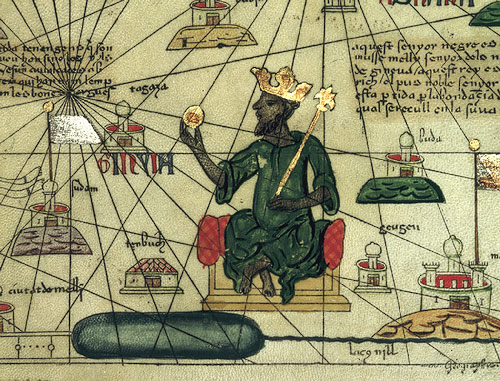 Oil prices have fallen considerably over the past two years. But this isn’t the first time the price of a core society resource has dropped so drastically. The economic history of salt is an interesting lesson for our time.
Oil prices have fallen considerably over the past two years. But this isn’t the first time the price of a core society resource has dropped so drastically. The economic history of salt is an interesting lesson for our time.
Middle Eastern countries spend millions of dollars and consume more than one hundred million kilowatt-hours of electricity per day to remove salt from water. Salt, it seems, is an abundant and extremely inexpensive resource.
Icy countries can buy a metric tonne of Jordanian road salt for US $50. The same amount of gold would cost about $50 million. But for much of human history, the price of an ounce of salt was almost the same price as an ounce of gold. Salt was as crucial to life in the ancient world as oil is in our world. Salt deposits found near the edge of deserts made civilization possible. Salt roads and caravans of tens of thousands of camels carried salt to inland markets. It was used as a nutrient and as a preservative for everything from food to mummies. Jewish people were known as children of salt and a salt covenant commanded Israelites to salt all of their sacrifices.
Salt was a flavoring for culinary inventions such as the Roman salad. Salt is also believed to be the cause of civilization’s first war which was fought over valuable Dead Sea salt supplies near the ancient city of Essalt on the Jordan river.
 Salt was also used as a currency. The English word salary has its roots in the Latin word for salt. The expression,”not worth his salt” began in ancient Greece where salt was traded for slaves. Salt’s value was comparable to gold and books. Adjusted for inflation, the wealthiest person in history was king Mansa Musa I of Mali who cornered the world’s salt market in the 14th century.
Salt was also used as a currency. The English word salary has its roots in the Latin word for salt. The expression,”not worth his salt” began in ancient Greece where salt was traded for slaves. Salt’s value was comparable to gold and books. Adjusted for inflation, the wealthiest person in history was king Mansa Musa I of Mali who cornered the world’s salt market in the 14th century.
Sa’di’s Golestan tells the story of a Persian king named Nushirvan who might have been the first person in history to borrow salt from a neighbor for a meal. But when this king sent a boy to get salt from a nearby village, he insisted that the salt must be paid for, “otherwise it will become a custom and the village will be ruined.”
The king explained that “To please the king who eats a single apple from a subject’s garden, his slaves will pull the tree up whole to plant in the palace yard; and if he lets five eggs be taken by force, his army will put to the spit a thousand birds.”
Salt remained valuable in early part of the 20th century. It was a salt tax imposed by the British government that inspired Mahatma Gandhi and many followers to march 200 miles to the Arabian sea to illegally gather their own salt as a form of peaceful protest.
Detroit began using salt on roads in the 1940s but demand for salt was seasonal and regional so its price fell behind the price of oil. But the Winter of 2014-2015 marked the beginning of a strange trend. The price of oil in November 2014 was only about half of what it was the previous year, but in the United States, an unusually cold winter doubled the price of salt over the same time period.
Photo of salt on Dead Sea shoreline by SJ Travel Photo and Video via Shutterstock Photo of King Mansa Musa I of Mali via wikimedia
Photo of Gandhi defying British law to harvest salt for the poor via wikimedia





Comments are closed.